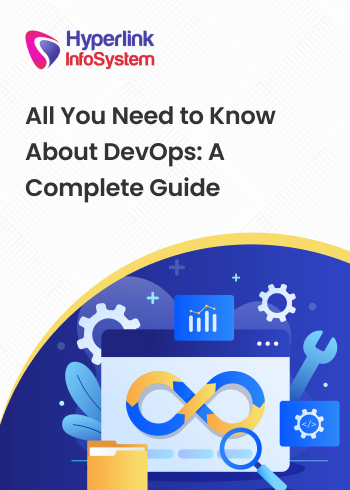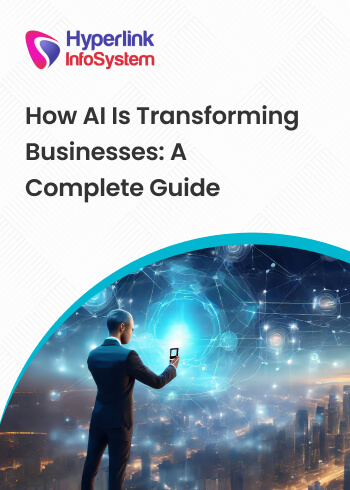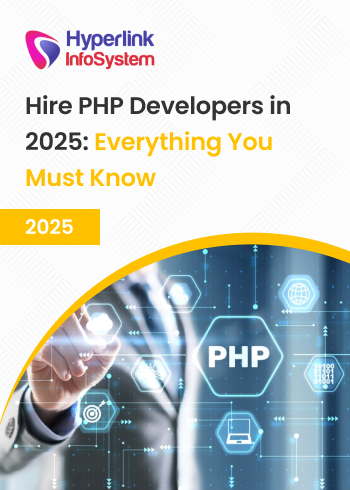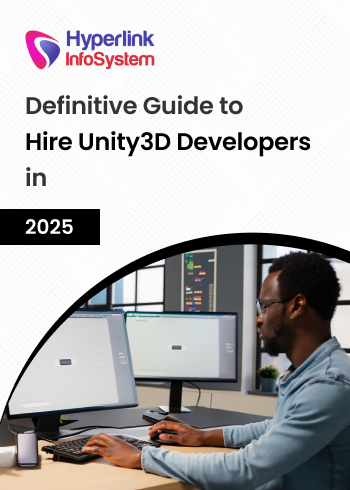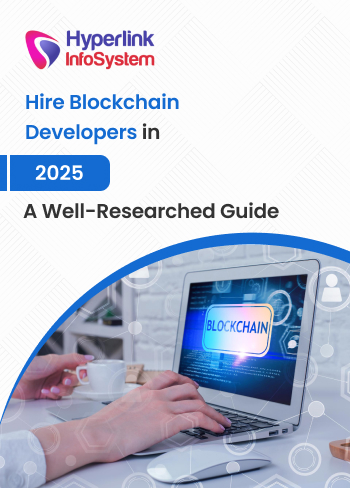Digital disruption is encouraging industries to adopt innovative solutions and improvise their business models. Almost every major industry has profited from modern software applications driven by web, mobile, and cloud technologies.
With that said, the implementation and integration of vastly different technologies and platforms would not have been possible without APIs. APIs are one of the strongest factors behind the revolution of digital transformation.
The majority of consumer technologies rely on modern APIs to operate on disparate platforms and applications. Global giants such as Facebook, Google, Twitter, Salesforce, and many other platforms rely on APIs to expedite the development of their applications. Nevertheless, despite the rampant use of APIs in all major industries,
app builders are not able to utilize APIs for the healthcare sector.
The healthcare sector is regarded as one of the most critical markets for software solutions in the world. Healthcare solutions are widely acknowledged because they influence the lives of every human on this planet.
With that said, implementing healthcare solutions is not easy and developers need to address several compliance issues to develop solutions for the industry. Although a number of providers now release APIs for healthcare solutions, not all APIs are considered safe for the development of healthcare solutions.
In this blog post, will discuss healthcare solutions in detail and review the best healthcare APIs for
medical app development.
Software Solutions in Healthcare
Software solutions related to healthcare are growing at a rapid pace.
According to Statista, the global market for population health management solutions was worth $8.9 billion in 2016.
However, due to the demand for more effective healthcare management systems, experts predict that the industry has the potential to grow at a compound annual growth rate of 21.25% in the future. This means the global market for the industry can be worth as much as $50.4 billion by 2025.
(The market for population health management solutions is expected to grow by $41.5 billion between 2016 and 2025. [Image Source])
In recent times, the idea of healthcare solutions has evolved from management systems. Instead of outdated legacy systems, healthcare solutions comprise a whole ecosystem of diverse solutions these days.
From health sensors, fitness trackers, and smart gadgets to software tools for accurate diagnosis and medical analysis, healthcare solutions are available in various forms. The availability of these solutions has helped everyone from common people to large medical organizations that use innovative solutions for treatment.
APIs for Healthcare
Application Programming Interfaces (APIs) are programming protocols and routines that enable software applications to communicate with each other. These interfaces are necessary for sharing critical data between two different software applications. They act as a bridge between two different platforms and ensure seamless communication.
As discussed previously, a number of large organizations, including Amazon, IBM, Salesforce.com, etc. continuously release APIs to enable developers to build new applications and solutions. These new solutions have the potential to create new value for customers and provide improved functionality and experience to end-users.
For this reason, the impact of standardized APIs in healthcare solutions is even more significant. Therefore, in an environment where APIs are easily available, there is potential for improving the experience for end-users and giving patients easy access to their medical data.
Access to this information can help them understand their individual medical issues more comprehensively and make more informed decisions. At the same time, solution providers would benefit from these APIs as they will enable them to create analytics platforms and innovative user interfaces that help their customers in clinical decision-making.
Researchers too can benefit from these solutions as they gain access to medical data and the details of claims made by patients. It would help them come up with a more accurate hypothesis, identify underlying patterns and trends and do research for more improvised healthcare solutions for the world.
Lastly, the availability of data would also pave the way for new software healthcare solutions. All of these factors combined can help the healthcare ecosystem unleash the true potential of its large data resources.
Unfortunately, the efforts to make healthcare data readily available for third-party applications have not been as fast as one would want. One of the main reasons behind this phenomenon is the lack of robust app developer programs and APIs available for healthcare solutions. As a result, the industry faces challenges with respect to the quality of care, data safety, and increased cost of developing healthcare solutions.
For instance, imagine the case of a stroke patient that has fallen unconscious and is admitted to the ER, but the hospital does not have the proper record of his prescribed dosage of clot-busting medication. It’s possible that the patient requires immediate medication to recover, but doctors have no way of knowing this without spending time on further testing.
This potential delay in medical treatment can prove to be fatal for the patient. Similarly, it would be difficult to track down the primary caregivers of the patient unless the personal information of the patient is readily available to doctors.
Likewise, if a person suffers from diabetes and their caregivers don’t have access to his records, it would be impossible for them to monitor the condition of the patient regularly.
For this reason, the
American Recovery and Reinvestment Act was passed in the US in 2009 and was responsible for introducing the Medicare and Medicaid EHR Incentive Program. The program was renowned for providing financial incentives to citizens that adopted certified electronic health record (EHS) systems.
The electronic health record system promoted the adoption of health records that can be accessed by hospitals. After the approval of this act, as much as
97% reported hospitals had implemented certified EHR technology by the year 2014.
However, it also introduced a set of requirements that obligated specific providers to “meaningfully use” EHR systems. To use these systems meaningfully, providers had to give their patients access to view, download, and transmit medical data to third-party applications or services.
With that said, the most recent amendment to this act in 2018 gives patients the option to access their medical information with the help of an API they trust. The latest change to this act allows EHR systems to communicate patient data seamlessly but also makes sure that EHR systems can communicate critical medical over a wide network of interoperable systems run by different providers.
Easier access to medical data via APIs and the interoperability of EHR systems have countless benefits for both patients and their caregivers. Patients no longer have to deal with several different patient portals for each service provider they use.
However, this act also presented several opportunities and benefits to health service and software solution providers. These vendors can now utilize open APIs to develop mobile and web applications that extract the clinical data of patients from different EHR portals and collect the data in a single location.
Furthermore, these open APIs allow solution providers to create further innovative solutions. Open APIs enable large hospital enterprise systems to customize the user interfaces of their solutions. As a result, EHR systems eventually became platforms for further innovation, where companies could build applications tailored to the usability of clinicians.
Due to the popularity of these solutions, solutions vendors such as Apple and Google are developing their own ecosystems to integrate health and fitness applications on Android and iOS devices. Besides these platforms, there are other vendors that provide relevant APIs for implementing healthcare solutions.
(Healthcare solutions developed through APIs can benefit patients and other end consumers in several ways.)
As more providers realize the importance of these APIs and the benefits they bring to patient care and profits, the number of these APIs will grow. In fact, a survey conducted by HIMSS Analytics in 2014 found that as much as 83% of healthcare providers were using cloud services. Therefore, the majority of these services relied on APIs to communicate medical data.
Healthcare APIs enable software developers to combine health applications with individual devices and entire ecosystems, which safely store and accesses health data. In a digital environment with various types of devices and platforms, it’s nearly impossible to develop healthcare solutions without the help of reliable APIs.
Furthermore, since healthcare networks nowadays typically have their own EHR (electronic health record) systems, transmitting medical data through them to other record systems would be impossible without using APIs.
However, top app development companies for healthcare solutions cannot use every healthcare API available on the internet. The Laws of the European Union prevent third-party healthcare application developers from a restricted number of trusted platforms and APIs.
To use these APIs in software solutions, platforms need to prove compliance with strict privacy and security regulations. This is why health solution providers such as
Chino.io have to comply with the data protection laws and security standards of current EU and member states.
Best Healthcare APIs for Medical App Development
APIs play an integral role in the development of healthcare solutions. A number of API providers leverage the principles of Big Data and integrate their rich data resources into healthcare apps. The data resources provide healthcare apps with enormous amounts of data, which these apps use to facilitate medical professionals, patients, and caregivers.
However, a robust healthcare app would need healthcare APIs from other services to function optimally. Below are some of the best healthcare APIs for medical app development.
Human API
Human API is a company that has designed a platform for the secure and transparent exchange of personal medical data. Currently, the company’s data network sources information from 85% of all hospitals in the US, along with more than 300 fitness apps and wearable devices.
The API revolves around the health data of patients. It is responsible for processing Big Data infrastructure to retrieve and analyze data. Afterward, it structures the processed data in specific forms to make it more accessible.
At the same time, the Human API leverages several medical and wellness blocks. As a result, it is able to offer a number of useful features such as reviewing prescriptions, managing patient profiles, providing access to vitals, and storing test results.
Moreover, the API uses pipelines powered through machine learning to selectively extract the data needed from large cluster files. Human API is available for free and its secure cloud complies with HIPAA regulations.
To top it all off, Human API provides developers with detailed and well-written documentation. Top software development companies can also access comprehensive guides for iOS, Android, and web development.
Box API
The
Box API is one of the most convenient and easy API services for healthcare and medical app development. It allows developers to embed functionalities such as secure document management of medical records, prescriptions, and test results. Furthermore, you can also enable file sharing within healthcare by using the API provided by the company.
If you are a developer, you can gain access to not only the API for mobile app development but also web and mobile SDKs. As a result, you can develop applications that are compatible with a vast number of operating systems and languages. These include Python, .NET, Node.js, Java, Chrome, Ruby, Android, iOS, and Windows.
The .NET SDK, Java SDK, Python SDK, Node SDK, Android, and iOS SDK are all maintained and developed by the BOX API itself. This means that these SDKs receive complete security updates as well as new features from the developers. You can even get support for these SDKs using GitHub or the company’s Platform Support forum.
The API also maintains a CLI (command-line interface) for developers, which they can use to install the API and SDK in their desired environments. However, the Android SDK is not available at full parity, so they lack some new functionality as developers work to bring it to full parity.
Lastly, you can extend your application with previously built UI components and then preview, share, and browse files on Box.
(Gartner recognized Box as One of the Representative Vendors for Content Service Platforms. [Image Source])
BetterDoctor API
BetterDoctor is another healthcare data provider that helps patients locate and choose healthcare professionals by providing them with relevant data. In 2018, the company was acquired by Quest Analytics, which itself is an industry-leading provider of network access and adequacy services to insurance regulatory agencies and health plans.
Nowadays, the platform works as a platform for enabling health plans and optimizing member experience. The API provides these services in compliance with state and federal regulations for network accuracy and adequacy.
Since healthcare costs are increasing in the US, the scope of health plans continues to shrink as their provider networks try to keep premiums affordable for citizens. This is why both state and federal insurance regulators in the US need to enact regulations for data accuracy and network adequacy. This is essential for providing health plan members with convenient and timely access to doctors and other medical professionals.
In such situations, primary-source verified provider and data management platforms such as BetterDoctor can help members to access a sufficient pool of hospitals and health professionals and ensure an accurate directory of network providers. The BetterDoctor API offers extensive documentation to developers which they can start using without undue effort.
Doximity
Doximity is a healthcare API provider that works across and operates alongside other healthcare platforms. Developers can use the company’s API to help patients and doctors interact with each other. Patients can also perform background checks on doctors that have registered on the platform.
Although running a background check on doctors seems like a tedious task, the API created by Doximity can extract complete information about physicians, and medical practitioners and let patients know about their specialization, expertise, and even a list of their colleagues.
The company behind the API was founded in 2011. The purpose of this company was to connect doctors and clinicians to patients and ensure that they are successful and productive. The platform is now one of the largest professional medical networks and enlists over 70% of all physicians in the US as members.
All medical professionals can use the data network to interact and share information with both patients and colleagues. Although the documentation for the API is not as thorough as other options, they can start using the API to implement its functionality.
WHO/Europe Data Warehouse API
The
WHO/Europe Data Warehouse API allows software developers to access the Data Warehouse stored at the World Health Organization’s regional office for Europe. You can use the healthcare API to discover data sets that have been added recently. At the same time, it’s possible to search the data warehouse and the specified data for analysis. You can also use the API for searching indicators and data sets that are connected by a common topic.
The data model follows the general structure, which comprises four key components; the measure, notes, data set, and classification.
A measure is a term for a collection of data for a measurable concept or particular indicator. This means that the measure can be a set of values such as country names. This information comes as a response to a survey question or an indicator. The measure contains summarized attributes or metadata that defines a particular measure type or unit type, etc.
On the other hand, the notes in the data set describe the definition of each measure in the data warehouse. Therefore, it contains country-specific notes that help us understand the data in a country's values. After we combine a list of measures, it can form a dataset. The dataset has metadata and attributes that describe the dataset on a larger scale.
Measures that relate to each other in some way are grouped together according to topical classifications. Data with related values may not belong to the same measures or dataset, but can be grouped together with the help of queries relating to a specific topic.
The data warehouse connected to this API is rich in data resources and contains considerable medical data of the European population. Developers can use this API to access and make healthcare solutions for European countries.
You can follow the
API specifications page to get access to the technical documentation of the API. The documentation is highly detailed and even contains tutorials on how to show expected results and demonstrate specific queries, as well as several other examples. However, the tutorials for these tasks are only available in the R language.
DrChrono
Like the Doximity API,
DrChrono API allows developers to access a large network of doctors and specialists. Developers can use the API to build a robust platform where doctors can access information regarding patients and colleagues, review observational notes, handle prescriptions, and view and reply to messages in the inbox of their messaging center.
It is a free Healthcare API and SDK designed by a team of developers for other developers. Therefore, anyone who wants to build
healthcare app solutions can utilize this resourceful API for leveraging health information, EHR systems, medical billing, and practice management platforms.
The API has 27 endpoints in total and developers can use any HTTP client through the programming language of their choice. At the same time, the platform offers an HTTP-level request and response documentation for their OAuth REST API.
For developers who need initial guidance for using the API and SDK, there are sample code snippets that provide information about all workflows and common functions. However, the resources provided by Drchrono are limited as it only offers an API and SDK for iOS only.
Walgreens Pharmacy Prescription API
Walgreen is a company based in the US that runs the country’s second-largest pharmacy store chain. The company specializes in providing patients with filling prescriptions, and health information, along with health and wellness products and photo services.
With that said, the company also gives developers access to a useful API that they can utilize in medical app development. App developers can use the Walgreens Pharmacy Prescription API to embed prescription-refilling functionality into their mobile applications.
The API allows third-party mobile applications to help medical patient order refills at the tip of their fingers. The refills of the prescriptions are filled at any of the 8,000+ Walgreens pharmacies spread across the US.
With the help of the API, mobile app solutions can alert the patient through messages whenever a given prescription order is available for pickup. Walgreens’s healthcare-focused Pharmacy Prescription API was designed to ensure prescription compliance and help patients in health management by streamlining the refill process through automated refill alerts.
CPE Monitor Service
The
CPE Monitor Service is a program that enables continuing education providers to share the list of attendees currently enrolled in CPE (continuing pharmacy education) credits or activities.
Federal institutions such as the National Association of Boards of Pharmacy (NABP) and the Accreditation Council for Pharmacy Education (ACPE) are using the CPE Monitor for storing and authenticating data for the CPE units completed and received by pharmacy technicians and pharmacists.
The service streamlines the verification process of registrants and licenses that match the requirements of the CPE. It not only helps the organization to save time and expenses but also provides them with a highly centralized repository of pharmacy technicians and pharmacists who are currently pursuing education.
Developers can use the CPE Monitor Service API to directly interact and extract data from the CPE database with the help of software. You can program SOAP calls for performing functions such as adding, editing, and removing CPE information.
TrueVault
TrueVault is a service designed to give software developers features such as pseudonymization and data tokenization. Originally, the service was able to provide developers with security features for a number of different applications. However, because of the restrictions of HIPAA compliance, developers can use its healthcare APIs for making healthcare apps secure.
By using the above API for healthcare, developers can ensure that doctors and patients can share information with greater trust. This allows doctors to do more accurate health condition monitoring and easier to specify the drug regimen, etc.
The API ensures that all critical personal health information is secure from data breaches and cyber threats. Therefore, by using the TrueVault APIs, you can ensure that your medical app is compliant with the standards of HIPAA.
Using this API is not complex and you can add these functionalities with the help of a few lines of code. Therefore, there is no need to worry about building applications from scratch or performing complex integrations.
ClinicalTrials.gov
The
Clinical Trial API is the API introduced by clinicaltrials.gov for sharing data related to clinical trials. It is a GraphQL API that can help developers search for the desired trial for a particular patient.
The query finds all relevant information using advanced filters that are available on the official website of clinicaltrials.gov. However, a patient can still match to trials that he may not be a part of but the API offers even more condition-specific filters to optimize search queries.
In other words, the programmer and other technical experts can use the API to encode search expressions and parameters inside the URLs. After you click on the correct query, you can access the study records you need from ClinicalTrials.gov. However, there are certain restrictions on the use of clinical data and records which are subject to these
Terms and Conditions.
There are three kinds of query URLs in the given API; Full Studies, Study Fields, and Field Values. The Full Study URL query performs the function of retrieving all the content from the first study record it finds against a submitted query by default.
The query can return up to 100 study records for each individual query. However, if you set the minimum and maximum rank parameters in the query URL, you will be able to access as many as 10,000 records. One example of this type of query would be:
https://ClinicalTrials.gov/api/query/full_studies?expr=cardiac+arrest
Similarly, the Study Field URL query is able to fetch the values of one or more fields for all the study records related to a submitted query. One example of this type of query would be:
https://ClinicalTrials.gov/api/query/study_fields?expr=cardiac+arrest&fields=NCTId,Condition,BriefTitle
Lastly, the Field Values URL query is responsible for recalling a list of values for an individual study field. The query will consider all study records returned for a submitted query. Needless to say, the API can be extremely beneficial for any application that uses data related to clinical studies. Such data can be used for the classification of diseases and identifying symptoms when combined with machine learning and natural language processing.
Google Cloud Healthcare
The
Google Cloud Healthcare API offers developers around the world a RESTful interface incorporating healthcare data and insights into their medical apps. At the same time, developers can access the analytical tools for machine learning and data visualization. The tools include operations and features like Tableau, vCloud Datalab, BigQuery, AutoML, and Cloud ML Engine.
With the help of the API, developers can perform real-time integration of locations, policies, and datasets. At the same time, they can work with healthcare networks that need compliance.
The API was launched by Google to bridge the gap between Cloud Healthcare API and the healthcare systems and applications designed and develop on Google Cloud. The API not only supports standard protocols and data formats of previous healthcare technologies, but it also connects your application data to advanced Google Cloud features.
As a result, your medical application would be able to access features such as scalable analytics with the help of BigQuery, machine learning led by Google’s AI Platform, and streaming data processing through
Cloud Dataflow. At the same time, Google Cloud Healthcare API streamlines the development of application and device integration, which leads to a faster digital transformation and is supported by real-time integration of healthcare networks.
The API gives developers access to the rich data resources of FHIR and DICOM. Since the API is compliant with HIPAA as well as certification from HITRUST CSF, there are no issues related to the security and privacy compliance of your medical application.
Although the API is extremely robust for any kind of healthcare solution, it’s possible that you don’t need these many features. So, it’s best to check the requirements of your medical application before starting to use the API, since it is not free. You can view the pricing information on this
page.
NHS API(s)
The NHS is a group of independent healthcare providers in the United Kingdom. The group’s website is home to a number of useful medical app APIs, you can use as a developer. Once you have signed in or registered to your account on the website, you can use any of the following APIs:
Behind the Headlines API
The Behind the Headlines API is responsible for retrieving health that is available at
NHS.UK/news.
Conditions API
The Conditions API can give developers access to content related to treatments and conditions. They can also access specific sections of information known as modules as well as entire pages from condition contents.
Live Well API
The Live Well API is available on the website and developers can use it to access general healthcare advice, tips, and tools that may help people make the best choices for everyday lifestyle and well-being.
Medicines API
The Medicines API is responsible for providing information on how medicines work. The patient can also search how they should take these medicines and the possible side effects of their medicines.
eHealthMe
The
eHealthMe API has the ability to retrieve data related to aggregated FDA adverse drug outcome records. Developers can embed this application in their medical apps to analyze FDA adverse drug outcomes reports and develop apps that may alert patients if a particular drug can cause harm to them according to their health conditions.
The information in these reports is available in categories such as age, duration, gender, etc. The API is available as a public service so anyone can access it for free. With that said, the API comprised JSON formatted responses and GET calls. The API limits access to data to 1 request for each second. Moreover, if you are accessing the API with a public API then you can only retrieve a total of 100 requests in a single hour.
iHealth
iHealth is a provider of tools and devices such as blood pressure monitors, wireless scales, and other mobile monitoring devices. However, it also gives its users an application that can help them track their health data.
A user can see detailed information such as blood pressure, BMI, heart rate, body weight, bone mass, diet, and as well as physical activity with the help of the application. With that said, the service provider also enables third-party applications to access the health data of users after the users authorize them. Therefore, you can use the API to access data for analysis.
Besides that, the API gives responses in JSON and XML format. You can integrate your healthcare application with iHealth, and access the data without any difficulty. The API will assign you a client_secret and an OAuth client_id for each application you want to integrate. After a user authenticates the use of their data, OpenApiMake will request to iHealth’s API Endpoints and help you access it with your OAuth credentials.
Challenges of Healthcare APIs in Medical App Development
Healthcare APIs are considered the missing link between the interoperability of healthcare systems worldwide. However, it’s important to address key problems with healthcare APIs to expedite the process of improving the quality of care and providing better health services to people around the world.
Mobile Device Security
A number of healthcare apps are developed specifically for medical mobile devices, instead of smartphones. Unfortunately, some of these hospitals and clinics also share these devices with their patients for rent. Considering that the total number of data breach cases in the US reached 1802 in a single year in 2022, healthcare APIs and applications need to be secure enough to counter these threats.
(In the US alone, the total number of records exposed to data breaches was 164.68 million in 2019. [Image Source])
Privacy Concerns
Everyone wants their medical history to remain private and only accessible to doctors and insurance companies. Most countries have data protection laws such as the European Union Data Protection Directive, the Data Protection Act in the UK, Personal Information Protection and Electronic Documents Act in Canada, and HIPAA in the US.
APIs have to be compliant with the data protection of their consumer country in order to be usable by developers. Furthermore, they should be able to anonymize the medical data of patients so their personal details are not revealed to developers.
Getting Access to Healthcare Databases
In the majority of countries in the world, medical data is not available on country-wide electronic records. On the other hand, in the US, the healthcare industry is divided between the operations of insurance companies and private hospital networks.
In both these situations, it is essential to find out a way to aggregate health data so that it can be utilized in an optimal way by healthcare solutions. Furthermore, it is necessary to build structures and mechanisms that promote hospital workers and patients to enter their data into hospital databases.
APIs can encourage medical professionals to populate the databases of APIs by providing in-built tools that allow them to scan and digitize patient medical records. At the same time, it is necessary to let patients upload medical data from smart devices and other fitness trackers. Lastly, they should cooperate with test labs to back up all test results to a database.
API Documentation
The lack of comprehensive documentation for APIs in healthcare is the reason why APIs are not being adopted as often. API providers need to give developers well-written developer guides to promote the use of APIs. This will also ensure that hospital IT departments are encouraged to integrate services with a given healthcare API.
Conclusion
As the world population continues to grow, the number of individual patients, insurance companies, and healthcare providers is also increasing. The usage of healthcare APIs helps us to leverage existing mobile, and web application technologies, recommendation and forecasting systems, and various support systems for personal well-being.
By using healthcare APIs you can create healthcare solutions that keep patients informed, improve doctor-patient relationships, and help caregivers provide the best quality of care.
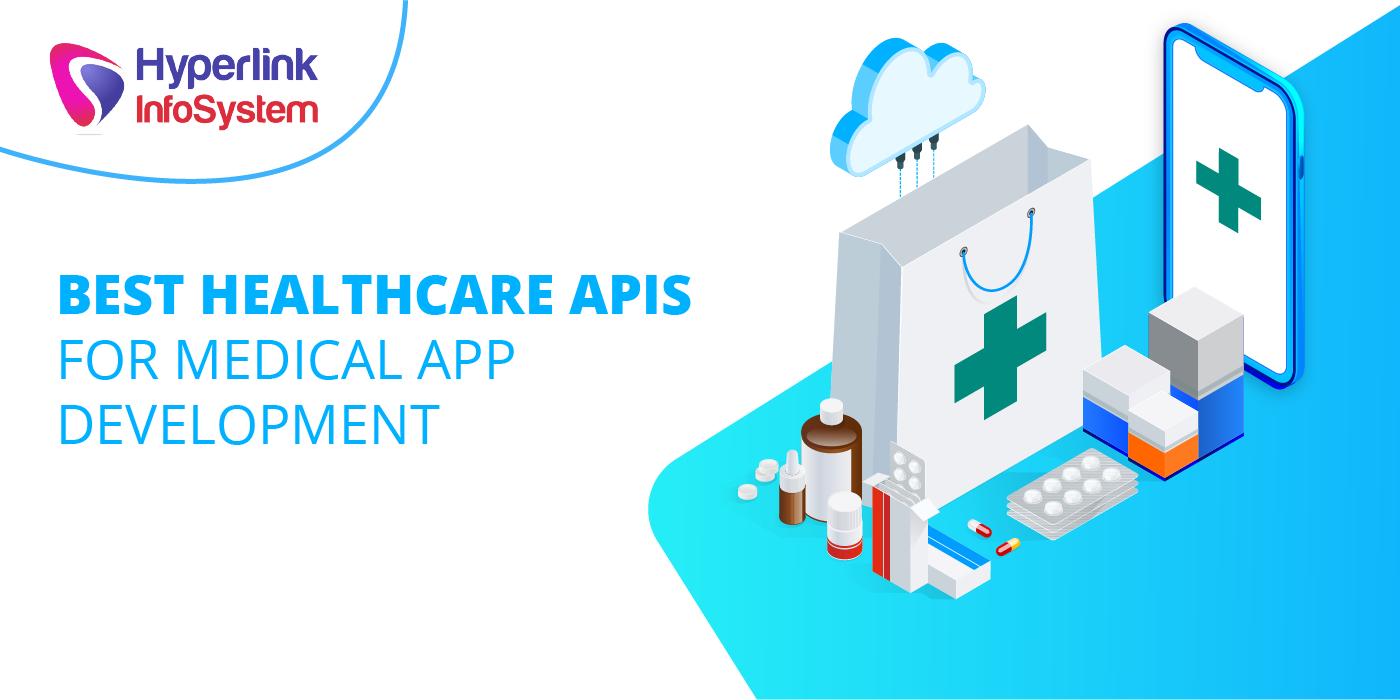





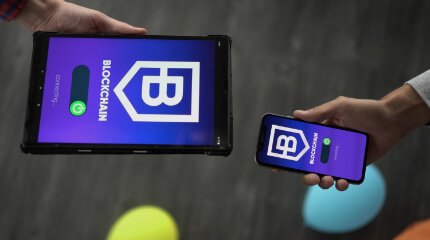
















 Next
Next